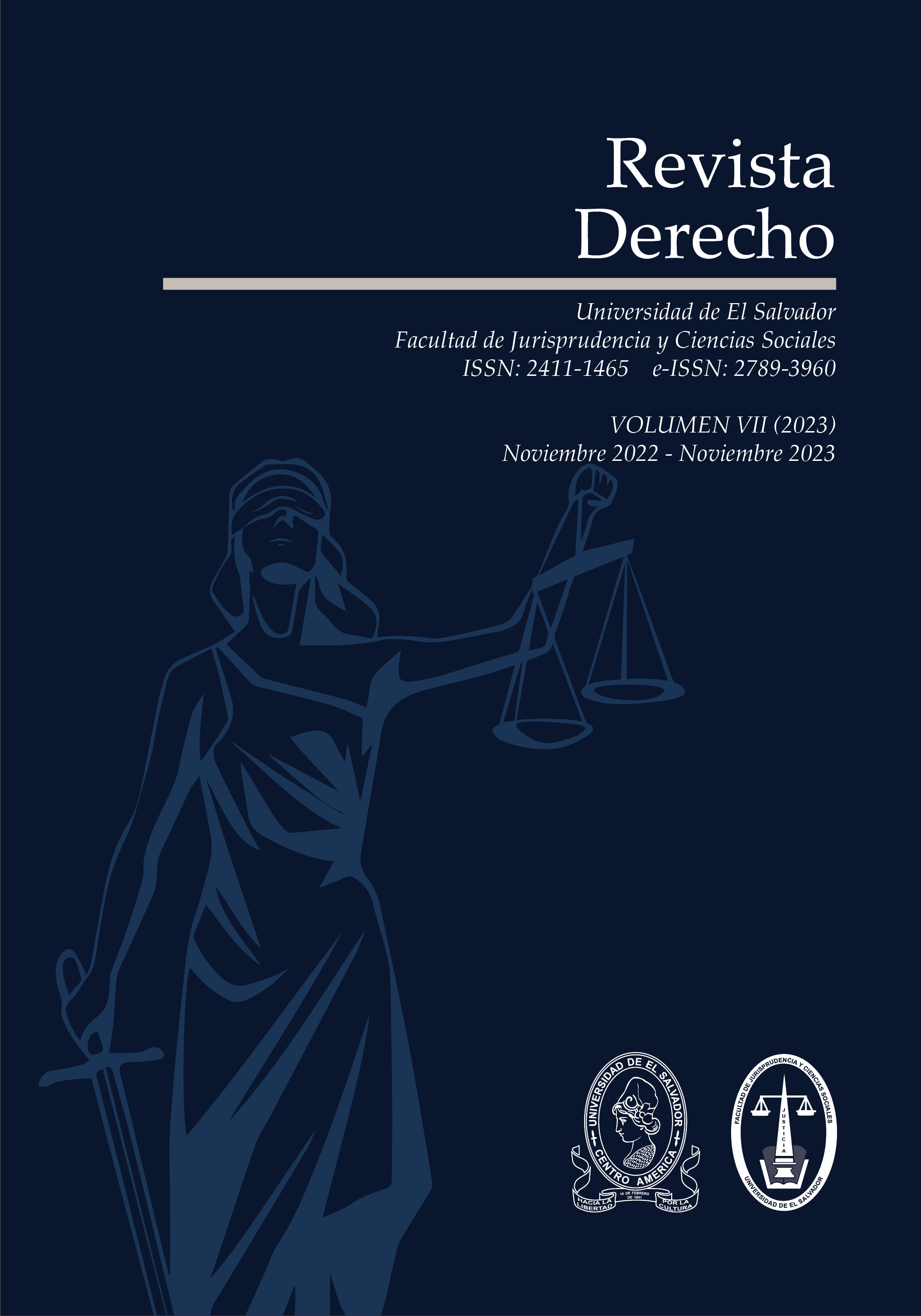ICT as a means for new crimes against women
Keywords:
ICT, LEIV, gender violence, cybercrime, legislation, discrimination, harassment, legal assetsAbstract
This article focuses on crimes that have been facilitated due to technological advances, especially those that use Information and Communication Technologies (ICT) to affect the legally protected right to a life free of violence for women. To address this, the current regulations governing behaviors related to the infringement of this right have been reviewed. Currently, continuous violations of women's rights persist, and the situation is alarming because violence is no longer confined to domestic or community settings but also spreads through the use of various electronic means, giving rise to new forms of violence against women that undermine their dignity, integrity, and freedom. Within the Salvadoran legal framework, there are different regulatory bodies such as the Penal Code, the Special Law for a Life Free of Violence for Women, which was subsequently strengthened with the introduction of the Special Law Against Computer Crimes to specifically address and punish the types of violence that affect women in all spaces, including the cyber realm. This intersection between criminal legislation and gender protection demonstrates a comprehensive approach to addressing the issue but may not be sufficient. These legal provisions conduct a thorough analysis of the conditions that must be met to constitute a crime that affects the protected legal right. Thus, they aim to ensure that women can live without the fear of any type of violence, including physical, psychological, emotional, symbolic, economic, patrimonial, sexual, femicidal, and even violence exercised through electronic means, and that their rights are respected in all areas of society. It is essential to emphasize that the fight against cybercrime and gender-based violence is a global effort. International cooperation and agreements signed by our country are crucial to ensuring gender equality and eradicating violence against women worldwide.
Downloads
References
Asociación para el progreso de las comunicaciones, navegadores y buscadores, consultado el catorce de julio de dos mil veintitrés. https://genderit.org/node/2726
Declaración Universal de los Derechos Humanos. París: Naciones Unidas y Derechos Humanos, 1948. Entrada en vigor: 3 de septiembre de 1981, de conformidad con el artículo 27(1). https://www.ohchr.org/es/instruments-mechanisms/instruments/convention-elimination-all-forms-discrimination-against-women
Estudio del caso, El Salvador: “prevención de violencia y construcción de capital social”. https://www.sdgfund.org/es/estudio-de-caso/el-salvador-prevenci%C3%B3n-de-violencia-y-construcci%C3%B3n-de-capital-social
García-Delgado, J. “Ciberdelitos de género: Hacia una nueva perspectiva de análisis y respuesta”. Revista de Derecho Informático, (2017): 43-55.
Gabinete de Seguridad, Gobierno de El Salvador. "balance con datos históricos en materia de combate a la criminalidad en el país", seguridad.gob.sv, diciembre de 2022. https://www.presidencia.gob.sv/el-salvador-registra-el-promedio-de-homicidios-mas-bajo-de-centroamerica/.
Guzmán, R. “Ciberacoso y violencia de género en línea: Un análisis de la normativa y la responsabilidad de las empresas”. Revista de Derecho y Tecnología, (2019): 121-135.
Jiménez, A. “Violencia de género en línea: Retos y desafíos para la protección de las mujeres”. En Revista de Derecho y Sociedad, (2020): 31-45.
ISDEMU. Información proporcionada por El Salvador para la elaboración del estudio a fondo sobre políticas, programas y buenas prácticas para combatir todas las formas de violencia contra la mujer. https://www.un.org/womenwatch/daw/vaw/responses/ELSALVADOR1.pdf
Ley Especial Integral para una Vida libre de Violencia para las mujeres. El Salvador: Asamblea Legislativa, 2011.
Ley Especial Contra los Delitos Informáticos y Conexos. El Salvador: Asamblea Legislativa, 2021.
Martínez, L. “Violencia de género en el ciberespacio: El reto de la protección efectiva”. En Revista de Derecho Penal y Criminología, (2018): 89-100.
Ministerio de Justicia y Seguridad Publica, Informes de hechos de violencia contra las Mujeres. San Salvador: 2021. https://www.seguridad.gob.sv/dia/informe-de-hechos-de-violencia-contra-las-mujeres/.
Navarro y Jasinski, 2013; Smith, 2012; Fanti, Demetriou y Hawa, 2012; Livingstone 2011; Calvete, 2010.
ONU, Convención sobre la eliminación de todas las formas de discriminación contra la mujer (Nueva York: Asamblea General de los Estados Unidos, 1979), Art. 1
Oficina Regional para América Central del Alto Comisionado de las Naciones Unidas para los Derechos Humanos (OACNUDH), "Modelo de protocolo latinoamericano de investigación de las muertes violentas de mujeres por razones de género (femicidio/feminicidio)", consultado el 16 de julio de 2023, https://www.ohchr.org/sites/default/files/Documents/Issues/Women/WRGS/ProtocoloLatinoamericanoDeInvestigacion.pdf.
Programa de las Naciones Unidas para El Desarrollo PNUD, “Tecnología para eficientizar la justicia en violencia de género”, 26 de abril 2021. https://www.undp.org/es/el-salvador/news/tecnologia-para-eficientizar-la-justicia-en-violencia-de-genero
REVM-ONU, Iniciativa cibernética de derechos civiles, 2018.
Downloads
Published
Issue
Section
License
Copyright (c) 2023 Revista Derecho

This work is licensed under a Creative Commons Attribution-NonCommercial 4.0 International License.
The authors transfer the copyright rights in favor of the Faculty of Jurisprudence and Social Sciences of the University of El Salvador (through Aequus Editorial) to include their writing in Revista Derecho.








